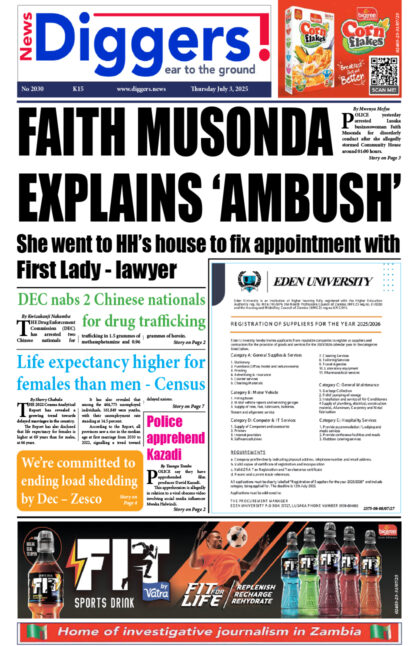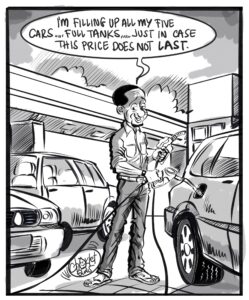IT was never a question of how or if, but when the Zambian government would admit the fact that it would never be able to settle Eurobond interest payment. Everything, from the failed implementation of austerity measures to the depleted Central Bank reserves, pointed to this chapter of Zambia’s book on debt. All indicators showed that this time would come when the government would concede that there is a looming debt catastrophe.
The only thing that suggested to the contrary was the political rhetoric. No one in this PF government was willing to admit that Zambia was flirting with a debt crisis. They found all sorts of fancy names for it, but not a crisis. The President, the Minister of Finance, the Chief Government Spokesperson, as well as the Patriotic Front leadership all spoke with confidence that they had everything under control.
To fool the world, they even came up with fake and illusionary debt repayment strategies. In the face of large fiscal deficits, the government claimed it was capable of creating “A Sinking Fund for Eurobond”. They created the Sinking Fund in July 2015, claiming this would answer the long term debt problem. Where is that Sinking Fund and how much is in it? How has it helped the country to avoid defaulting on Eurobond?
Experts warned the PF regime to tone down on Kaloba and the flamboyant spending, but they didn’t want to listen. The government’s expenditure pattern and increased borrowing were a recipe for defaulting on the country’s loans and other obligations; everyone could see this apart from those in government. This government didn’t want to listen when economists advised them to meet the IMF conditions in order to (a) assure bond holders of the government’s commitment towards sustainable debt management and (b) to cut down on continued borrowing and government spending.
We recall the stubborn statement that President Edgar Lungu made at State House in July 2017. Mr Lungu, while being applauded by PF cadres, said “If IMF thinks we have gone beyond norms of good governance and democracy, they are free to go. We cannot sacrifice Zambian people for economic expedience. I say it again, if they think we have gone astray, let them go…Fear nothing, the country is in safe hands.”
But the moment of truth has come now, and there is nowhere to hide. The bondholders are knocking heavily and are refusing to take any pleas for delayed repayment. When you look at the statements from the Ministry of Finance, you can tell that there is a desperate cry for mercy, but without a viable payment plan. Nothing in the 2021 budget is assuring to the creditors, apart from emphasis that we are in deep, deep trouble.
Minister of Finance Dr Bwalya Ng’andu wants the bondholders to fill pity for Zambia because the country is now spending half of government revenue collections on servicing interest on debt, compared to a few years ago when only 20% of revenues would be channeled towards interest obligations. How can we dismantle US$18.5 billion debt while we are in breach of the benchmarks for a bailout programme? This is the question that the minister can’t find an answer to.
We have completely depleted our reserves. This is the lowest we have ever gotten to in many years and the creditors in Europe had been warning us as a country that we were getting into a junk bond, but government did not do anything drastic.
Today, lending institutions are beginning to knock on our Treasury, demanding their dues. In our layman understanding, this is how a debt crisis develops. To understand the depth of Zambia’s financial problem, we no longer need a calculator, we just need to analyse the responses and excuses from the government.
Dr Ng’andu must open the door for the bondholders. They are here. They want to see what has been happening. To them, Zambia has been too secretive about its actual debt position, and the country is not deserving of a moratorium. What’s the plan now for Mr Lungu and his debt-addicted government?
Like we said, every fool can borrow money, any fool can spend money, but not everyone has the ability to pay back. Knock! Knock! It’s the bondholders!



















